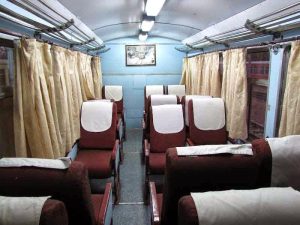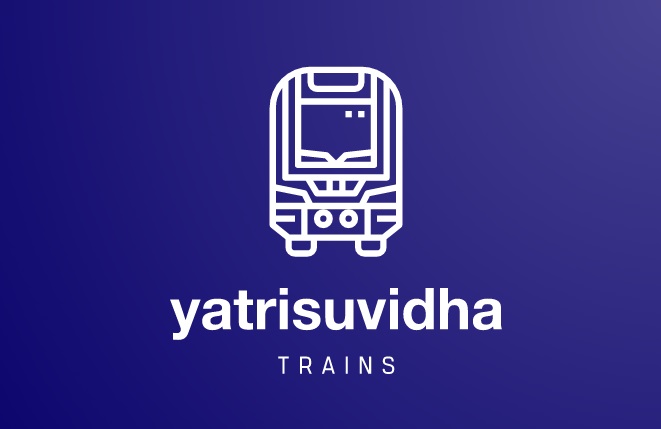
AC Train Ticket Prices in India: A Comprehensive Guide
The Indian Railways system offers diverse options to cater to travelers’ comfort, convenience, and budgets, with AC (Air-Conditioned) classes being the most premium. AC train tickets provide better amenities, comfortable seating or sleeping arrangements, and a more enjoyable journey. In this article, we’ll explore everything about AC train ticket pricing—covering all AC classes, factors influencing ticket prices, booking details, and popular routes.
- Types of AC Classes in Indian Railways
First Class AC (1AC):
Offers the highest level of comfort, with spacious cabins, lockable doors, and two-berth or four-berth options.
Typically found on premium trains such as Rajdhani, Shatabdi, and Duronto Express.
Second Class AC (2AC):
Provides comfort similar to 1AC but with fewer privacy features, with curtains for berths instead of lockable doors.
Generally offers four berths in each compartment and has reading lights, charging points, and bedding services.
Third Class AC (3AC):
A more economical option than 1AC and 2AC, often found on most long-distance trains.
Offers six berths in each compartment, no curtains for privacy, and a basic level of comfort.
AC Chair Car (CC):
Designed for short journeys and found in Shatabdi and Jan Shatabdi trains.
Provides seating similar to an airplane with reclining seats but no berths.
AC Sleeper Economy (3E):
Introduced as a budget-friendly option with six berths per compartment.
Similar to 3AC but with lesser amenities, and often found on trains like Garib Rath Express.
Vistadome AC Coaches:
Unique class with large glass windows and glass roofs for scenic travel.
Higher priced due to enhanced viewing experience, especially on routes with scenic landscapes.
- Factors Influencing AC Train Ticket Prices
Class of Travel:
As expected, ticket prices vary significantly between 1AC and lower-tier AC classes like 3AC or 3E.
Train Type and Demand:
Premium trains (e.g., Rajdhani, Shatabdi) have higher fares due to added services, speed, and better punctuality.
Demand fluctuations, especially during holidays, can affect prices.
Distance and Route:
Longer routes incur higher fares. Popular routes between major cities or scenic routes with Vistadome coaches may also be more expensive.
Dynamic Pricing and Tatkal Quotas:
Some trains operate on a dynamic pricing model, where fares increase with the occupancy rate.
Tatkal ticket booking also comes at a premium for last-minute travelers, raising the base fare by a certain percentage.
- Detailed Ticket Price Range by AC Class
First Class AC (1AC):
The most expensive, with fares ranging from ₹2,500 to ₹7,000 or more, depending on the route and train.
Popular routes like New Delhi-Mumbai or New Delhi-Bengaluru have high fares due to demand.
Second Class AC (2AC):
Mid-range fares typically between ₹1,500 to ₹4,000.
Second AC fares are economical for longer journeys while still providing good comfort.
Third Class AC (3AC):
Economical AC travel, with prices ranging from ₹1,000 to ₹2,500.
3AC is popular for long journeys, offering comfort at a lower price point.
AC Chair Car (CC):
Ideal for day journeys, with fares between ₹500 and ₹1,500 based on the distance.
AC Sleeper Economy (3E):
Budget-friendly with fares from ₹800 to ₹1,800, offering comfort at a slightly lower price than 3AC.
Vistadome AC Coaches:
Ranges between ₹1,500 to ₹3,500, offering premium scenic views.
- Additional Costs and Concessions
Additional Charges:
Tatkal Charges: Higher rates for last-minute bookings, usually an additional ₹300-₹500.
Catering Charges: On premium trains like Rajdhani and Shatabdi, catering is included; otherwise, passengers pay extra for meals.
Concessions:
Senior citizens, students, and differently-abled passengers may receive discounts on base fares.
Concessions apply to general booking, but Tatkal or premium charges still apply fully.
- Booking AC Tickets and Fare Check
Booking Platforms:
Tickets can be booked through the IRCTC website, mobile app, or at railway reservation counters.
Private travel booking websites may offer similar options, though with added convenience fees.
Fare Check and Seat Availability:
Users can check fares and seat availability on the IRCTC website or app.
Detailed fare breakdowns, including base fare, service tax, reservation charges, and dynamic pricing, can be viewed before booking.
- Types of Tickets: General, Tatkal, and Premium Tatkal
General Tickets:
Standard tickets booked well in advance at base fare prices.
Tatkal Tickets:
Available for urgent travel; a higher fare applies, with limited availability and restrictions.
Premium Tatkal:
Follows a dynamic pricing model, where fares increase based on seat demand and availability.
- Popular AC Train Routes and Their Ticket Prices
Mumbai-Delhi Route:
1AC fares range from ₹3,500 to ₹5,500, 2AC from ₹2,500 to ₹3,500, and 3AC around ₹1,500 to ₹2,500.
Delhi-Bangalore Route:
1AC fares between ₹5,000 and ₹6,500, while 2AC is around ₹3,500 to ₹4,500, and 3AC from ₹2,000 to ₹3,000.
Kolkata-Mumbai Route:
1AC ranges from ₹3,500 to ₹5,000, 2AC from ₹2,500 to ₹3,500, and 3AC around ₹1,800 to ₹2,500.
- Refunds and Cancellation of AC Tickets
Cancellation Policies:
Cancellations before chart preparation allow for partial refunds after deducting a service charge.
Tatkal and Premium Tatkal tickets, however, have limited or no refund options.
Refund Timelines:
Refunds are usually processed within 7-10 days for online bookings, whereas counter-booked tickets may require visiting a reservation counter.
- Advantages of AC Travel
Comfort and Privacy: Better seating or sleeping arrangements with bedding provided on long routes.
Enhanced Safety: AC coaches generally have better safety features.
Temperature Control: Useful for comfort in both winter and summer conditions.
- Future of AC Train Travel: New Developments
Vande Bharat Express and Vande Metro: Next-gen AC trains with higher speeds, improved passenger experience, and semi-high-speed capabilities.
Dedicated AC Trains: Future plans include more dedicated AC express trains and sleeper-only AC trains for specific routes.

Leave a Reply